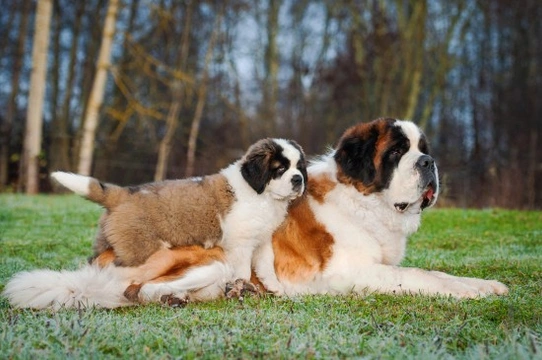
Predicting the adult size of your puppy
Obviously if you get a Rottweiler puppy, you can fairly safely assume that it will grow to be a much larger size than a Yorkshire Terrier pup, but even within the same dog breed groupings, there can be some fairly considerable size variations in the adult dog! However, if you own a mixed breed puppy or a dog whose breed makeup is uncertain, it can be that much harder to judge how large your puppy might eventually grow to be when they are an adult.
While there is no foolproof formula to predict the size that your puppy will eventually reach, there are a few clues and pointers that you can use to help you to make an educated guess, if you know what to look for! Read on for our tips on how to predict the adult size that your puppy will reach.
Look at the parent dogs
Once of the most obvious and clearest indicators of the likely adult size of any puppy is to look at the parent dogs. If both of the parent dogs are of the same breed, a good rough guide to adult size is that the female puppies will reach around the same adult size as the dam, and the male puppies will reach around the same adult size as the sire. If the two parent dogs are of different breeds, the puppies will generally fall somewhere between the two.
Investigate the component breeds
If your puppy is of mixed breeding and particularly if you are not totally sure of their full genetic makeup, it can be worth asking a professional such as a veterinary surgeon or dog groomer to give you their thoughts on what they think the likely breed makeup of your puppy might be. You can then use this as the basis of research into the potential component breeds and their sizes, and once you have established a likely description of the mix, work out the average size your puppy may reach accordingly.
Bear in mind that mixed breed dogs do not generally display a totally even split of all of the various traits of each breed, and you should be prepared for the possibility that your puppy may potentially grow to be either as small as the smallest component breed, or as large as the largest.
Size and gender
Male dogs usually end up being slightly larger and heavier than female dogs of the same breed and makeup, so you can realistically expect that your male pup will grow rather larger than females from the same litter, and vice versa.
Look at the paws
Puppies do not tend to grow in size all at the same rate across their bodies, and we are all familiar with seeing a small puppy that seems to be walking around on paws much larger than their frame! While this is not a foolproof guide, looking at the size and build of your puppy’s paws can give a rough indicator of the final size of your adult dog. If your puppy’s feet are large and well built, the chances are that they will end up larger than another puppy of the same breed that has a smaller, more delicate set of paws.
Bear in mind how old your puppy will be before they stop growing
While puppies are generally considered to be adult dogs at around the age of one year, some breeds of dog (particularly larger breeds and giant breeds) continue to grow until they are eighteen months old or even more. Don’t assume that once your puppy reaches a year old, their growth cycle is completed! While it is true that they will do most of their growing before they reach a year old, there might still be an extra growth spurt to come!
Calculate the likely weight gain of your puppy
There is a rough formula that you can use to calculate the approximate adult weight of your puppy, and so, establish a picture of their final size. This varies depending on the breed and type of dog, however, and also requires you to know the weight of your puppy when they are young.
Try to do the maths using these guidelines:
For small dogs and toy breed dogs:
Start with the weight of the dog when they are six weeks old, and then times it by four. This should give you a rough figure of their adult weight, and so, size.
For medium, large and giant dog breeds:
Start with the weight of the dog at fourteen weeks old. Double this figure, then add to this half of the original figure of the starting weight to provide your guide.
Be prepared for surprises
There really is no foolproof way to work out for certain what your puppy’s adult weight and size will be, and at best, you can only make an educated guess. You should always prepare yourself for the possibility that your little dog might end up much larger than your original predictions, or on the other hand, will simply end up being a petite example of their breed and type.



